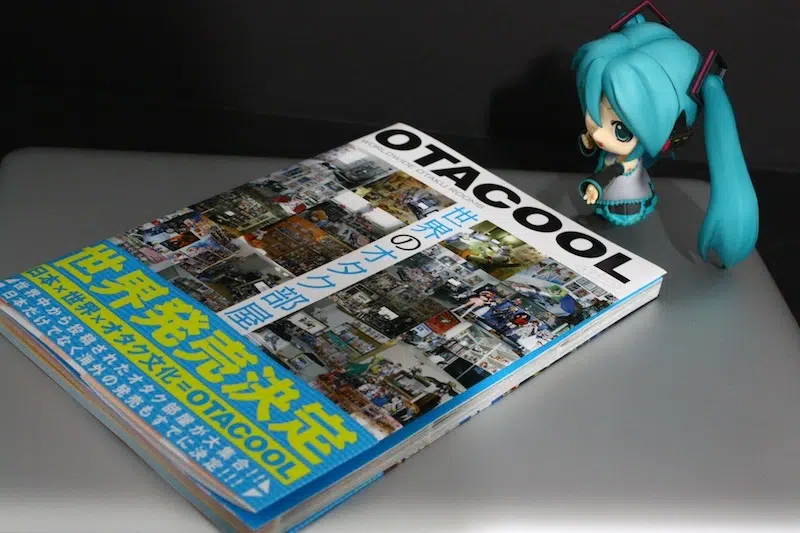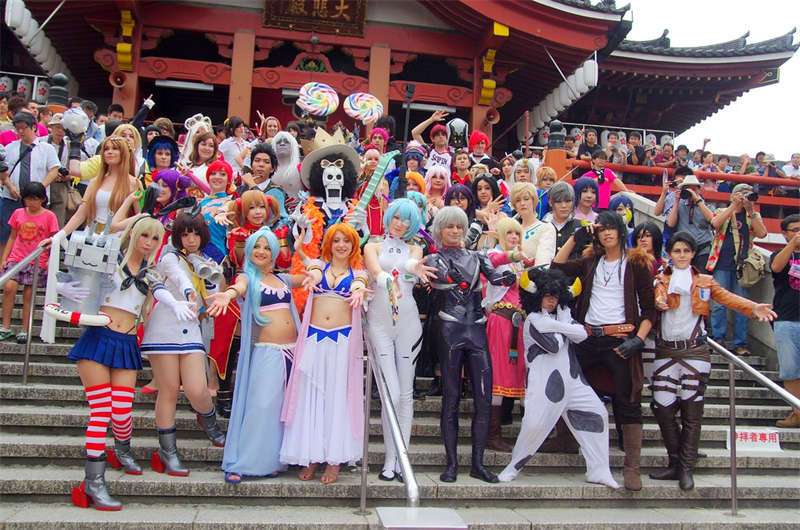Otacool: The book series that connected the otaku world.

In a world where the term otaku used to be associated exclusively with Japan, one publisher dared to look beyond borders and show that fanaticism for anime, cosplay and Japanese pop culture was a truly global phenomenon. That publisher was Kotobukiyaand the series that did it is called OTACOOLA collection of books that changed the way the world viewed international otaku.
What is OTACOOL?
OTACOOL is a series of thematic books published by Kotobukiyaa well-known Japanese collectible figurine company. The word OTACOOL is an acronym for "otaku" y "cool"and perfectly sums up the mission of the books: demonstrate that being otaku can also be modern, creative and culturally valuable..
The series was curated and promoted by Danny ChooBritish blogger based in Japan and an influential figure in the dissemination of otaku culture abroad.
Otacool 1: Worldwide Otaku Rooms
The first volume of the series (Otacool 1) focuses on the otaku rooms around the world. It was launched in 2009 and caused a sensation for its original proposal: fans from different countries sent photos of their rooms full of manga, figures, posters, consoles, desks and geek decorations.
What made it special?
- He broke the stereotype of the "shut-in Japanese otaku".
- It showed that otaku collecting and passion existed in places like Germany, the United States, Mexico, Brazil and more.
- It inspired thousands of fans to decorate and share their own spaces in forums such as MyFigureCollection, 4chanand later Reddit.
It was more than a book: it was a global window into a way of life.
Otacool 2: Worldwide Cosplayers
The second volume (Otacool 2published in 2010) took the vision even further by focusing on cosplayers from all over the world.
This volume included:
- High quality photos of professional and amateur cosplayers.
- Brief profiles with information about the characters represented.
- A visual, artistic and cultural approach.
Why did it mark a before and after?
- It was the first Japanese book to make Western cosplayers visible in earnest.
- It included figures that would later become legendary in the world of cosplay, such as. Linda Le (Vampy Bit Me).
- It served as a platform for many cosplayers to be invited to international conventions.
Otacool 2 helped legitimizing cosplay as an international art form and expression.
Otacool 3: Worldwide Illustrators
The third volume focused on digital artists and fanart artists from around the world. With a style more similar to a artbook, Otacool 3 meets:
- Original illustrations inspired by anime, manga and video games.
- Portfolios of emerging and established artists.
- Comments on techniques, software and personal style.
Otacool 3 was highly valued within the creative community, especially by users of platforms such as DeviantArt y Pixiv.
Cultural impact of the series
Beyond the books, OTACOOL left a lasting imprint on global otaku culture:
- Democratized the term "otaku".showing that it was not exclusive to Japan.
- Encouraged a international community that she felt recognized, validated and connected.
- She pioneered what we see today in networks like Instagram or TikTok: the visual celebration of otaku culture from anywhere in the world.
For many fans, to see themselves reflected in a Japanese book was unthinkable until Otacool came along.
Where to get the books today?
Although the books are no longer in mass circulation, you can still find them at:
- Amazon Japan or eBay
- Second-hand collectors' stores
- Otaku community forums
They are highly valued collector's items because of what they represented: the beginning of a global culture of fandom.
The series Otacool was much more than a collection of books about otaku culture. It was a symbol of openness, diversity and recognition. It showed the world that fans of anime, manga, video games and cosplay exist in every corner of the globe, and that they deserve a place in the Japanese cultural narrative.
At a time when the globalization of anime was still in its infancy, Kotobukiya and Danny Choo helped to build a real bridge between Japan and the millions of fans waiting to be seen.






Responses